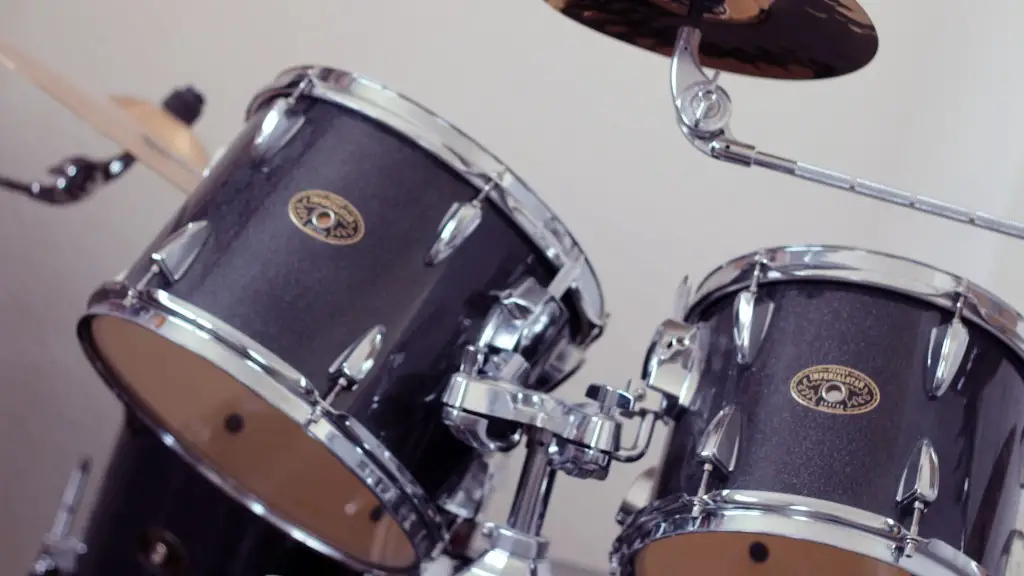Electric guitars are a popular instrument among musicians, and they can produce a wide range of sounds. However, one problem that many guitarists experience is a buzz on their guitar. This is an annoying and potentially damaging issue that needs to be fixed as soon as possible. Fortunately, it is relatively easy to fix this issue.
The first thing you should do is to check the guitar strings. Make sure the strings aren’t too loose or too tight; they should be at the correct tension for the best sound. You should also check for any dirt or debris that may have accumulated on the strings, since this can cause buzzing as well. If there’s any buildup, clean it off with a soft cloth.
Next, check the bridge. Make sure all of the screws are tight and secure. If any of them are loose, tighten them using a small screwdriver. You should also make sure the bridge is at the correct height; if it’s too low or too high then it can cause buzzing.
Finally, check your pickups. Make sure they’re properly adjusted and not too close to each other or to any metal parts of the guitar. If your pickups are old or worn out then you may need to replace them in order to get rid of any buzzing.
Fixing buzz on
Check the Wiring and Electronics
If your electric guitar is experiencing a buzzing sound, the first thing you should do is check the wiring and electronics. Start by examining your pickups and their connections to make sure they are plugged in securely and nothing is loose. If that looks good, move on to check the volume knobs and tone control knobs to ensure they are both functioning properly. You should also check to make sure all your cables are in good condition, replacing any that are damaged or worn. Finally, check all solder joints for any signs of corrosion or melting. If you find any, re-solder them using a soldering iron. With these steps, you should be able to fix any buzzing issues with your electric guitar.
Detune the Guitar
If you’re having an issue with a buzzing sound coming from your electric guitar, then it’s time to detune it. The first step is to identify the source of the buzzing sound. It could be from a loose string, or from the nut or bridge of your guitar. Make sure that all your strings are properly tightened and in tune. If you find any loose parts, tighten them up. If the buzzing persists, then take your guitar to a qualified repair technician for further inspection.
Once you’ve identified and fixed the source of the buzz, it’s time to detune your guitar. Using a tuner, slowly turn each string down until you hear the buzzing sound dissipate. Once you have gone far enough, turn each string back up until it is in tune again. This should take care of any buzzing that was present before. Be sure to check all strings and adjust them as needed if they are not in tune after detuning.
Fixing the Buzz on an Electric Guitar
Guitar buzzing can be a frustrating issue, but luckily it can usually be fixed relatively easily. Begin by checking all of the connections between the guitar and the amplifier, as well as any effects units or cables. Make sure all connections are secure and that all cables are in good condition. If everything is connected correctly, try adjusting the volume and tone knobs on both the guitar and the amplifier. If you still hear buzzing noises, check to see if any of your strings are loose and need to be tightened or replaced.
To further reduce buzzing, clean your strings with a soft cloth before playing. This will help reduce friction between them and your fretboard, which can cause unwanted noise. Additionally, consider raising the action of your strings slightly by adjusting the bridge or truss rod – this will reduce string buzz caused by strings that are too close to the frets. Lastly, make sure you have good pickups installed in your guitar – if necessary consider replacing them with new ones for improved sound quality. With these steps you should have a buzz-free electric guitar in no time!
Check for Loose Parts
If your electric guitar is buzzing, the first thing you should do is check for any loose parts. Even if your guitar has been well taken care of, over time some of the screws and bolts may have become loose. Check all of the screws on your pickups and bridge to make sure they are securely fastened. Also, check the input jack to make sure it is firmly in place. If any of these parts are loose, tighten them until they are snug and secure.
Another potential cause could be a worn out or frayed cable. Make sure that all of your cables are in good condition and free from any kinks or tears. If you have an older cable that is showing signs of wear and tear, it may be time to replace it with a new one.
Finally, you should also check the connections between your amp and guitar to ensure they are working properly. If there is any corrosion on the cable or jack, clean it off with some rubbing alcohol. This should help restore proper contact and eliminate any buzzing noise coming from your electric guitar.
Adjusting String Height on Electric Guitar
The height of strings on an electric guitar are an essential part of getting the perfect sound. If the string height is too low, the strings can buzz against the frets and dampen the tone. On the other hand, if the height is too high, it can make playing difficult and uncomfortable. Fortunately, adjusting string height is relatively simple with a few basic tools.
To start, you’ll need a Phillips screwdriver and a set of hex wrenches. Remove all six strings from your guitar and use your Phillips screwdriver to loosen the two screws that hold down each saddle on the bridge. This will allow you to adjust each string separately.
Next, use a hex wrench to turn each saddle’s adjustment screw until it’s at your desired height. Be sure to make small adjustments at a time so that you don’t overshoot your target height. When finished, retune your guitar and check for buzz. If everything sounds good, reattach all six strings and enjoy your newly adjusted instrument!
Adjusting the Pickup Height
If you’re experiencing a buzzing sound coming from your electric guitar, the first thing you should check is the pickup height. It’s possible that the pickups are too close to the strings, causing them to buzz when they vibrate. Fortunately, this issue is relatively easy to fix. To adjust the pickup height, you’ll need a Phillips head screwdriver and a small flathead screwdriver. Start by loosening the screws on either side of the pickups. Then, use your flathead screwdriver to gently raise or lower each pickup until it’s in line with the string when fretted at the highest fret. Once you have both pickups in line with their respective strings, tighten down their screws and test out your guitar again. If there’s still some buzzing, repeat the process until it’s gone.
Be sure to adjust each pickup individually so that they both match up evenly with their strings. If one is higher than the other, it can cause an imbalance in volume and tone between them. It may take some trial and error before you find that perfect balance of pickup height, but it will be worth it when you get a clean sound out of your guitar!
Final Words
To fix the buzz on your electric guitar, start by checking the amp settings, cable connections, and the bridge and nut of your guitar. If those don’t fix the problem, you may need to adjust the intonation or replace some of the guitar’s components. It is important to remember to consider all possibilities when trying to diagnose why your electric guitar is buzzing. By following these steps, you should be able to pinpoint what needs to be adjusted or replaced in order to get rid of that pesky buzz.





